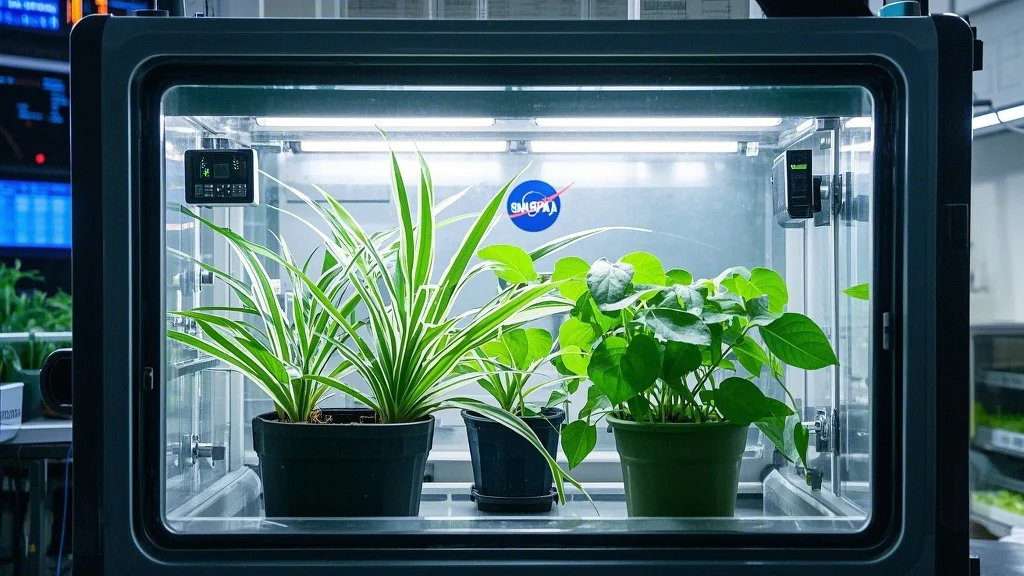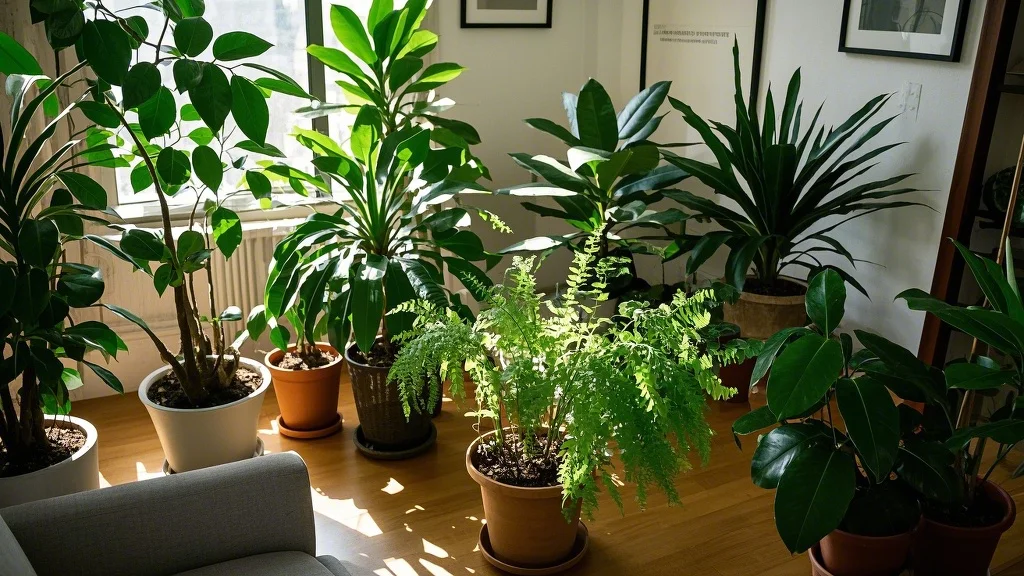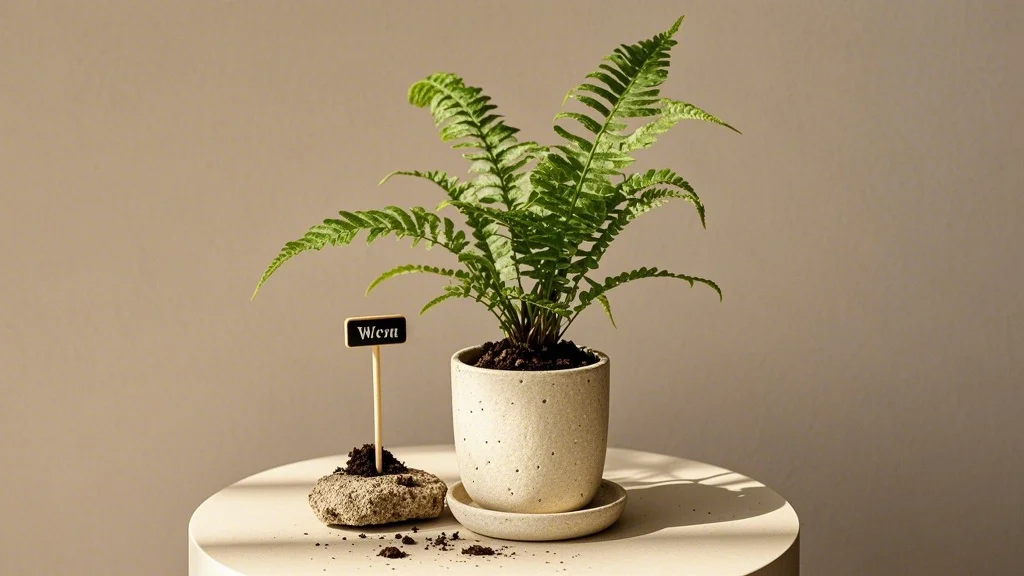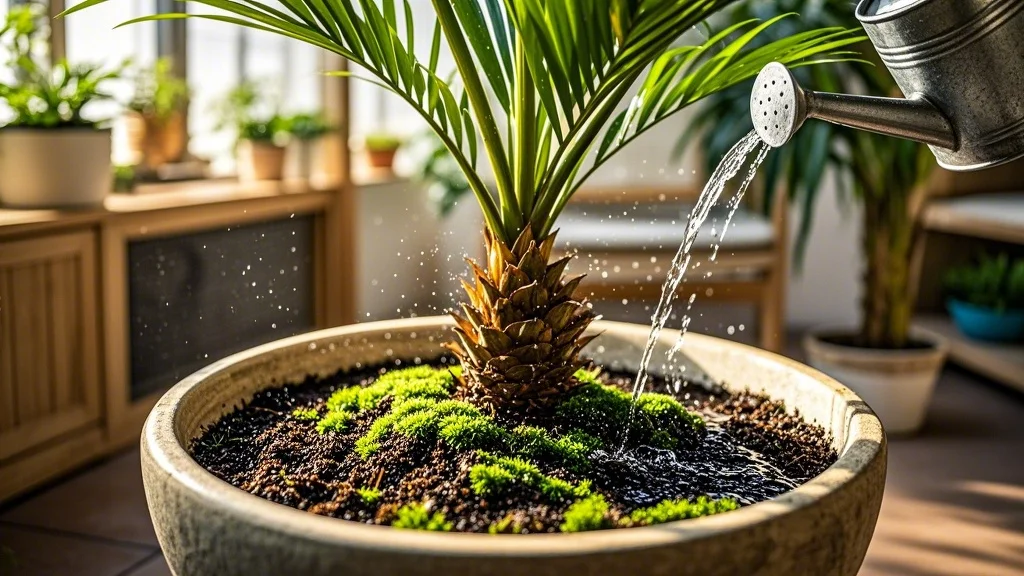Many of us have heard the appealing claim: houseplants can purify your indoor air. It’s a compelling reason to fill your home with greenery beyond their aesthetic appeal. But how many plants do you actually need to make a meaningful difference in your air quality? Is a single pothos in the corner doing anything significant, or do you need to transform your apartment into an indoor jungle?
This question deserves a science-based answer, especially for those of us living in urban environments where air quality concerns are real. Let’s explore what research tells us about plant air purification numbers and the realistic plant density needed for effective air cleaning.
Contents
- 1 The NASA Study: Where It All Began
- 2 From Lab to Living Room: The Reality Check
- 3 The Scientific Consensus Today
- 4 A Practical Approach to Plant Density
- 5 Beyond Numbers: Other Air Quality Factors
- 6 The Holistic Approach to Indoor Air Quality
- 7 Making Peace with Plant Limitations
- 8 Practical Recommendations
- 9 Conclusion: Finding the Right Balance
The NASA Study: Where It All Began

The popular notion that houseplants clean air largely stems from a famous 1989 NASA study. Researchers were investigating ways to purify air in sealed space stations and found that certain plants could remove volatile organic compounds (VOCs) like formaldehyde, benzene, and trichloroethylene from sealed chambers.
The study identified several efficient air-purifying plants including:
- Spider plant (Chlorophytum comosum)
- Peace lily (Spathiphyllum wallisii)
- Snake plant (Sansevieria trifasciata)
- Boston fern (Nephrolepis exaltata)
- Rubber plant (Ficus elastica)
This research sparked widespread enthusiasm about using plants as natural air purifiers. However, there’s a crucial detail often overlooked: the study was conducted in sealed laboratory chambers, not real-world living spaces.
From Lab to Living Room: The Reality Check
More recent studies have examined plant air purification in settings that better represent our homes. The findings provide a more nuanced picture:
The Numbers Game: Plant-to-Space Ratio
A 2010 study published in the journal HortScience calculated that you would need 10-20 plants per 100 square feet (or approximately 1-2 plants per square meter) to match the air-cleaning capacity observed in the NASA experiments.
For perspective, in a modest 800-square-foot apartment, that translates to 80-160 plants. Even the most dedicated plant enthusiasts might find this challenging to maintain.
The Kamal Meattle Approach
Environmental activist Kamal Meattle developed a system using specific plants to improve air quality in his Delhi office building:
- Areca palm (Dypsis lutescens): 4 shoulder-height plants per person for daytime oxygen
- Mother-in-law’s tongue (Sansevieria trifasciata): 6-8 waist-height plants per person for nighttime oxygen conversion
- Money plant (Epipremnum aureum): 1-2 plants per person to filter formaldehyde and other chemicals
While his results showed improved air quality and reduced respiratory problems among employees, this still represents a significant number of plants per person.
The Scientific Consensus Today
Current scientific understanding suggests that while plants do remove certain pollutants, the effect in typical home conditions is much smaller than initially hoped:
- Air exchange rates matter: Most homes have air exchange with the outside world through ventilation, doors opening, and tiny cracks. This means pollutants are being diluted naturally, and plants need to work faster than this dilution rate to make a difference.
- The 2019 Drexel University study: Researchers reviewed decades of research and concluded that the natural air exchange rate in buildings far outpaces the VOC removal capabilities of plants. They calculated that you would need between 10-1000 plants per square meter of floor space to clean air as efficiently as typical building air exchange systems.
- The microbiome factor: Some air purification may come not from plants themselves but from microorganisms in their soil. However, this effect is still relatively small in typical home settings.
A Practical Approach to Plant Density
Rather than aiming for complete air purification through plants alone, consider a balanced approach:
Realistic Plant Numbers for Supplemental Benefits

For noticeable supplemental air quality improvements:
- Small apartment (500-700 sq ft): 15-20 medium to large plants
- Average home (1,500 sq ft): 30-40 plants distributed throughout
- Per room basis: 3-5 plants per bedroom, 5-8 plants in larger living spaces
Strategic Plant Placement
Focus on placing plants where you spend the most time:
- Bedroom: Place 2-3 plants that release oxygen at night (like snake plants or aloe vera) near your bed
- Home office: Position 3-4 plants within a 6-foot radius of your workspace
- Living areas: Cluster several plants together to create “purification zones” rather than spreading them thinly throughout the space
Maximizing Each Plant’s Impact
To get the most air-purifying benefit from each plant:
- Choose plants with large leaf surface areas – more leaf surface means more gas exchange
- Keep leaves dust-free – wipe leaves regularly to maintain maximum photosynthesis efficiency
- Ensure proper light – plants need adequate light to photosynthesize effectively
- Maintain healthy soil microbiomes – avoid overwatering and use quality potting mixes
Beyond Numbers: Other Air Quality Factors
While focusing on plant quantities, don’t overlook these important considerations:
Ventilation Remains Key
Plants work best as a supplement to, not replacement for, proper ventilation:
- Open windows when outdoor air quality is good
- Consider mechanical ventilation systems in tightly sealed homes
- Use exhaust fans in kitchens and bathrooms
Target Specific Pollutants
Different plants have affinities for different pollutants:
- Formaldehyde: Boston ferns, peace lilies, and spider plants
- Benzene: English ivy, gerbera daisies, and peace lilies
- Trichloroethylene: Peace lilies, gerbera daisies, and snake plants
- Xylene and toluene: Bamboo palm and peace lilies
Humidity Benefits
Beyond direct air purification, plants increase humidity, which offers additional benefits:
- Reduced airborne dust
- Decreased survival rates for airborne viruses
- Relief from dry skin and respiratory irritation
The Holistic Approach to Indoor Air Quality
For truly improved air quality, combine plants with other strategies:
- Eliminate pollution sources – Use low-VOC products, avoid smoking indoors, and remove sources of mold
- Mechanical filtration – HEPA air purifiers can remove particulates plants cannot
- Regular cleaning – Vacuum with HEPA filters and dust frequently
- Humidity control – Maintain 30-60% humidity for optimal air quality
- Strategic plant placement – Use plants as part of your overall air quality strategy
Making Peace with Plant Limitations
While the dream of purifying your air with just a few plants is appealing, the science suggests we need a more realistic perspective:
The Real Value of Houseplants
Even if plants aren’t air-purifying powerhouses, they offer numerous benefits:
- Psychological well-being: Plants reduce stress and improve mood
- Biophilic connection: They satisfy our innate need to connect with nature
- Humidity regulation: Plants release water vapor through transpiration
- Aesthetic improvement: They beautify our living spaces
- Incremental air improvements: Every little bit helps, even if not transformative
Quality Over Quantity
Rather than focusing solely on numbers, prioritize:
- Healthy, thriving plants over numerous struggling ones
- Larger plants with more leaf surface area
- Species known for higher transpiration rates
- Proper care that maximizes each plant’s photosynthetic potential
Practical Recommendations
Based on current research, here are realistic recommendations for using plants to supplement air quality:
For a Studio Apartment (400-600 sq ft)
- 8-10 medium to large plants
- Focus on 2-3 different species known for air purification
- Create one “plant cluster” of 4-5 plants in your main living area
- Place 2-3 plants in your sleeping area
For a Two-Bedroom Home (1,000-1,200 sq ft)
- 15-20 plants distributed throughout
- 5-6 plants in the main living area
- 3-4 plants in each bedroom
- 2-3 plants in the kitchen
- 1-2 plants in each bathroom (if light allows)
For Larger Homes (2,000+ sq ft)
- 25-30 plants minimum
- Create multiple plant clusters of 5-7 plants in frequently used spaces
- Consider larger statement plants (like fiddle leaf figs or bird of paradise) for greater leaf surface area
- Supplement with smaller plants on shelves and counters
Conclusion: Finding the Right Balance
The question “How many plants do you need to clean indoor air?” doesn’t have a simple answer. The scientific evidence suggests that plants alone cannot completely purify indoor air in typical home settings without unrealistic quantities.
However, this doesn’t mean plants have no value for air quality. A thoughtful approach with a reasonable number of plants—perhaps 15-30 for an average home—can provide supplemental air quality benefits while offering numerous other advantages.
The most balanced perspective is to view plants as one component of a comprehensive indoor air quality strategy. Combine proper ventilation, source control, mechanical filtration when needed, and a healthy collection of plants to create the freshest indoor environment possible.
Rather than pursuing an arbitrary number, focus on creating a thriving indoor garden that brings you joy while contributing incrementally to your home’s air quality. After all, the psychological benefits of living among greenery may ultimately prove more significant than their direct air-purifying capabilities.
Want to learn more about optimizing your indoor plant collection? Visit OwnGardens.com for expert guides on plant care, lighting solutions, and creating your ideal urban garden sanctuary.








